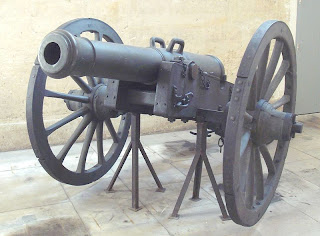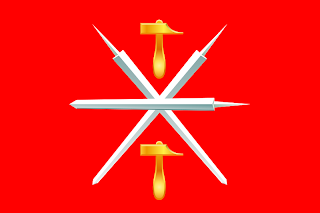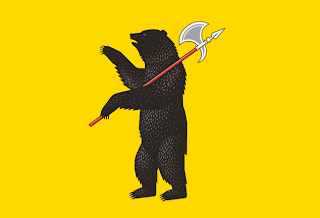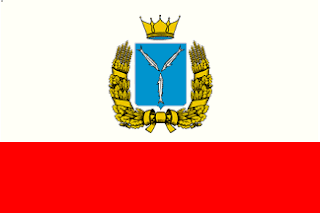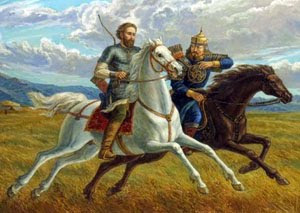Moscow City and Volgograd
Flag of Moscow City
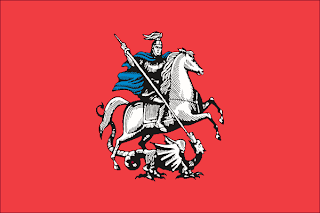
The flags of these two federal subjects are the last to be presented here in this 20 part series that is focused on Russia.
My primary contribution to vexillology is a meta-vexillological subject that flags can be classified in groups of two in a unique manner. The previous 20 blog posts illustrate this phenomena with the federal subject flags of Russia. Regular vexillology mostly deals with documenting, social study, and historical analysis of flags. Meta-vexillology is the undefined frontier of flag study.
The flag of Moscow City and Volgograd Province are united via the colours red, white, and blue. Red is their shared background. Both persons are drawn in black and white. St. George is depicted striking a dragon in the mouth, while the flag of Volgograd depicts the statue 'The Motherland Calls.' Both flags also have an element of blue. The cape of St. George is blue while there are two blue vertical stripes on the left of Volgograd's flag.
Flag of Volgograd

St. George is the patron saint of Moscow City and also makes a smaller appearance on the flag of Moscow Province. St. George is famous for being a dragon slayer and lived as a rebel Christian before it was made legal by Emperor Constantine I in 313.
The statue 'The Motherland Calls' was made in 1967 in honor of the Battle of Stalingrad. The key turning point of WWII. This battle would rage for half a year from July 1942 until February of 1943. Two more years would follow before Russia would defeat her enemies to the west.
Statue in Volgograd Mother Land Calls

Many battles for Moscow have also taken place, but the 'largest and deadliest battle' in human history took place in Volgograd Province when the city was called Stalingrad. This most epic world shaping battles has been retold in movies and even in video games.
The union of the Moscow City and Volgograd flags illustrate the universal dichotomy - man and woman. The man of Moscow City is considered a holy man, St. George, while the woman of Volgograd is simply a Russian Woman with no religious attachment. The man is high on his horse but the woman stands barefoot with her feet planted on the earth. Both persons hold weapons - the man holds a lance while the woman hold a sword. The man is striking downwards at an imaginary dragon, while the woman is holding her sword upwards towards the heavens.
Like Yin and Yang Moscow and Volgograd are hollowed ground of fallen heroes and ordinary men and women. These patches of earth have been baptized by the paradoxically tragic and hopeful river of war and peace.
Russia Today YouTube Links
Battle of Moscow
www.youtube.com/user/RussiaToday#p/search/6/Yd6egExrJGo
Tourism Moscow
www.youtube.com/user/RussiaToday#p/search/14/sMtsXUNsZH8
Battle of Stalingrad
www.youtube.com/user/RussiaToday#p/search/0/tjGnsEerzag
Tourism Volgograd
www.youtube.com/user/RussiaToday#p/search/18/COPyMHy7GPs
click here for Part I of Russian Flag Symmetry

